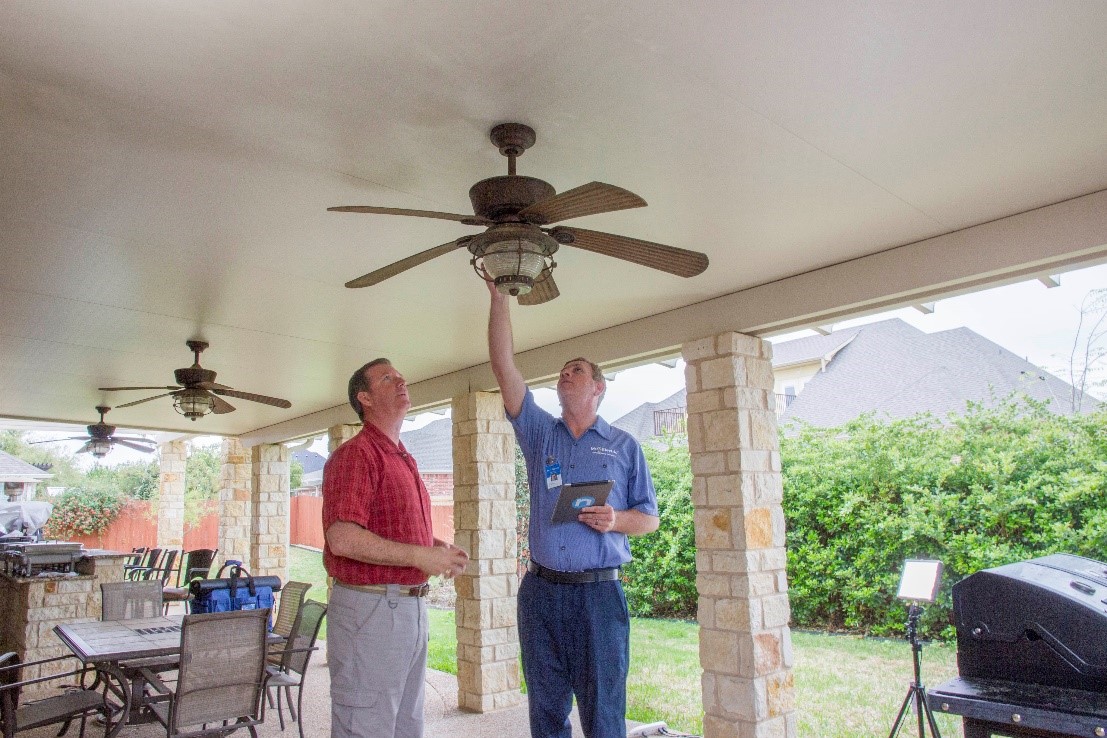Emergency Certified Electricians in Dallas, TX.
Call this Sunday to Get 10% OFF
Emergency Certified Electricians in Dallas, TX.
Call this Sunday to Get 10% OFF

Ceiling fans are versatile appliances that offer both comfort and energy savings when used correctly. Beyond simply providing a breeze on hot days, ceiling fans can help distribute air more evenly, improve air circulation, and even reduce heating and cooling costs. However, to fully reap the benefits of your ceiling fan, it's essential to understand how to use it efficiently. In this article, we'll explore tips and techniques for maximizing the effectiveness of your ceiling fan while minimizing energy consumption.
Most ceiling fans come equipped with a reversible motor, allowing you to change the direction of the fan blades. In the summer months, set your fan to rotate counterclockwise (when viewed from below) to create a cooling breeze. This downward airflow creates a wind-chill effect, making you feel cooler without actually lowering the room temperature. In the winter, switch the fan to rotate clockwise to gently draw air upwards, helping to circulate warm air trapped near the ceiling back down into the room.
Ceiling fans can complement your heating, ventilation, and air conditioning (HVAC) system by improving air circulation and distribution. During the summer, use your ceiling fan in conjunction with your air conditioner to help evenly distribute cool air throughout the room. This can allow you to set your thermostat a few degrees higher without sacrificing comfort, potentially saving on cooling costs. In the winter, run your ceiling fan at a low speed in reverse mode to help distribute warm air more efficiently, reducing the workload on your heating system.
Most ceiling fans come with multiple speed settings, allowing you to customize airflow based on your comfort needs and energy preferences. During mild weather, running your fan on a low or medium setting can provide gentle air movement without consuming excessive energy. On hotter days, crank up the speed to high for maximum cooling effect. Keep in mind that ceiling fans cool people, not rooms, so there's no need to leave the fan running in unoccupied rooms.
Take advantage of natural ventilation by strategically using your ceiling fan in conjunction with open windows. During cooler mornings and evenings, open windows on opposite sides of the room to create cross ventilation. Then, run your ceiling fan on a low setting to help draw in fresh air and expel stale air, improving indoor air quality and reducing reliance on mechanical ventilation systems.
In addition to ceiling fans, exhaust fans play a crucial role in maintaining indoor air quality by removing moisture, odors, and pollutants from kitchens, bathrooms, and other enclosed spaces. Regularly clean and maintain your exhaust fans to ensure optimal performance, and consider upgrading to energy-efficient models if necessary. If you encounter any issues with your exhaust fans, such as unusual noises or reduced airflow, don't hesitate to contact a reputable electrician or electrical repair service for assistance.
Ceiling fans are valuable assets in any home, offering year-round comfort and energy savings when used efficiently. Don't overlook the importance of maintaining and optimizing exhaust fans to ensure proper ventilation and indoor air quality. If you require assistance with ceiling fan installation, exhaust fan repair, or any electrical services, consider consulting a qualified electrician at Mr. Electric to ensure the safe and efficient operation of your home's ventilation systems.